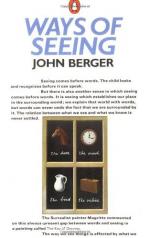
|
| Name: _________________________ | Period: ___________________ |
This test consists of 15 multiple choice questions and 5 short answer questions.
Multiple Choice Questions
1. What do paintings of children demonstrate about the patron who commissioned the work?
(a) It demonstrates how the patron remains in the upper class of society.
(b) It demonstrates that the patron is of good health.
(c) It demonstrates their good political judgment.
(d) It demonstrates what they own and enjoy in life.
2. Which of the following is a common theme in the images on pages 116 and 117?
(a) Africa and America supporting Europe.
(b) Sensuous nude women.
(c) Navigation and the New World.
(d) Science versus religion.
3. According to Berger et al., what does traditional oil painting effectively do?
(a) Allows for the reformation of the church.
(b) Promotes the lower classes of society.
(c) Permits artists to express portraits in a humanistic style.
(d) Reduces all things to a tradable material or measurable commodity.
4. Which statement best describes photography in 1883?
(a) It is very good at capturing subjects in motion.
(b) It is a primitive visual technology still in the developing stages.
(c) It is a high-tech visual format.
(d) It increases the number of images an artist can capture.
5. What is the approximate historical range of the images on pages 66 and 67?
(a) From the 18th to the 19th century.
(b) From the early 1200s to the mid-1500s.
(c) From the mid-1200s to the late-1800s.
(d) From the 20th century.
6. What could be the theme for all of the images included on pages 68 to 71?
(a) Love will always lead to sorrow.
(b) Power is forever corrupt.
(c) Nudity does not always equal pleasure for the viewer,
(d) Death is a necessary part of life.
7. All of the following are included in the images featured on pages 70 to 71, except for which ones?
(a) Food and drink.
(b) Political icons.
(c) Dead animals.
(d) Hunting.
8. Which work is by Courbet, as shown in Chapter 6 on pages 124 and 125?
(a) "The Witches Sabbath."
(b) "Girl in White Stockings."
(c) "La Fortune."
(d) "The Temptation of Saint Anthony."
9. Who is considered a master of traditional European oil painting?
(a) Rembrandt.
(b) Gauguin.
(c) Van Gogh.
(d) Picasso.
10. What words best describe the gaze of the subjects on their own material goods in a traditional oil painting?
(a) Generous, faithful, pleasant.
(b) Formal, wary, content.
(c) Satisfied, generous, serious.
(d) Confident, formal, arrogant.
11. What does Couture's painting "A Roman Feast" display?
(a) A full glass of wine and a festive party.
(b) A voluptuous reclining woman.
(c) A full table of meat and bread.
(d) The end of a war with a field of bodies.
12. What is similar about the two paintings by Courbet on pages 124 and 125?
(a) They both show family settings.
(b) They both depict voluptuous women.
(c) They are both feminine.
(d) They are very dark and bold in color.
13. What is genre as a subject?
(a) New world subjects.
(b) Common life subjects.
(c) Exotic botanicals.
(d) Exotic animals.
14. Which word best describes the position of artists as traditional oil painting develops?
(a) Opposition.
(b) Fortune.
(c) Defense.
(d) Struggle.
15. What could easily be stated as the theme of the paintings on pages 68 and 69?
(a) War.
(b) Death.
(c) Love.
(d) Melancholy.
Short Answer Questions
1. Which subject is accorded with the highest prestige?
2. Which statement could easily be an interpretation of Van Gogh's "a cornfield with birds flying out of it"?
3. How is Maddox Brown's painting different than the other images on pages 66 and 67?
4. What types of images are paired together on pages 126 and 127?
5. Why is it a significant accomplishment for an artist to paint children at play?
|
This section contains 667 words (approx. 3 pages at 300 words per page) |

|




